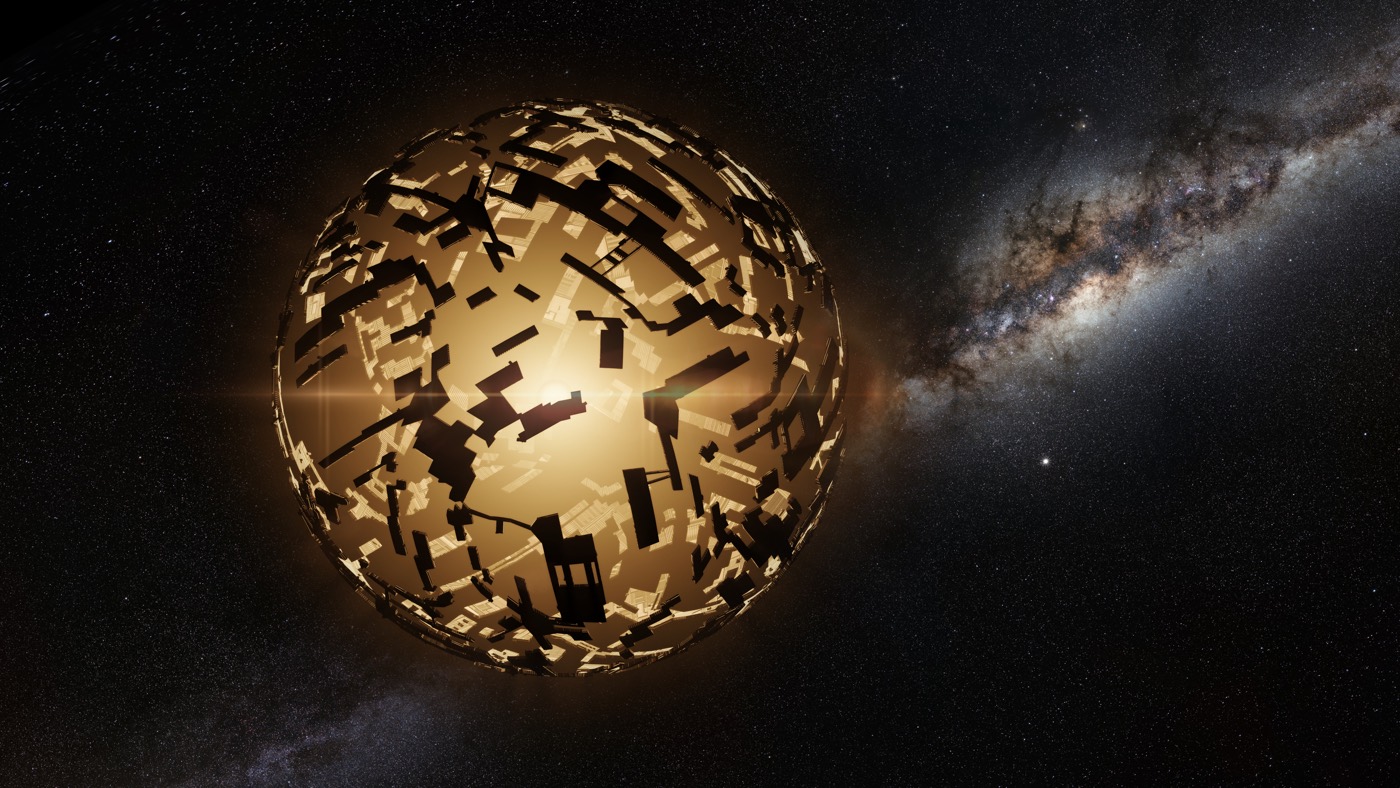If Aliens Are Causing Weird Dimming of 'Tabby' Star,' They Aren't Using Lasers to Do It

The evidence for aliens around one of the weirdest stars in our galaxy — Boyajian's star — is not looking promising. The star's unusual dimming events have garnered some bizarre theories: One of them speculates that an alien megastructure is responsible for the light anomalies.
But, a new study searching for signs of extraterrestrials has not turned up any evidence to back up that theory.
Such an alien civilization, capable of building a starlight-blocking megastructure, would possibly communicate using lasers. With that in mind, David Lipman, an undergraduate at Princeton University, and collaborating astronomers looked for signatures of lasers in the light from Boyajian's star, largely using openly available data. The group found no evidence of even low-power lasers — ones that even our technically young civilization could conceivably manage, they write in their study, which was accepted for publication in the journal Publications of the Astronomical Society of the Pacific. [Greetings, Earthlings! 8 Ways Aliens Could Contact Us]
"Although our result was negative, there's still a lot we learned by creating and applying this algorithm, which could be used with other stars," Lipman, lead author and an undergraduate at Princeton University, told Live Science. "It speaks to how much you can do with publically available data."
Finding Tabby's star
In 2016, astronomer Tabetha Boyajian announced the discovery of weird behavior coming from KIC 8462852, a star 1,600 light-years away in the constellation Cygnus. The star, later renamed Boyajian's star (or Tabby's star), exhibited odd dips in light, first noticed by citizen scientists as part of the Planet Hunters project, and later analyzed by Boyajian. Typically, a star's periodic changes in brightness is caused by orbiting planets or is due to pulsations in the stellar atmosphere. In the case of Boyajian's star, though, the dimming of light was irregular and unpredictable. Scientists couldn't figure out what was happening.
Some even imagined an alien megastructure was periodically blocking the light; consequently, the new research took a fresh look at the possibility of an extraterrestrial source.
"By carefully searching this star for laser emission, we are testing the scenario of whether the brightness variations are due to any type of artificial structure around the star, such as a Dyson sphere," co-author Howard Isaacson, an astronomer at the University of California, Berkeley, told Live Science. "If the brightness variations were indeed due to an artificial structure around the star, then perhaps the beings that created the structure are communicating using optical lasers."
Get the world’s most fascinating discoveries delivered straight to your inbox.
Using data from the Automated Planet Finder Telescope at the Lick Observatory in California, the study's researchers developed a computer algorithm to search the starlight for light that could have come from a laser beam. Given the star's distance, they should have been able to see a signal powered by a 24-megawatt, or larger, laser.
Scientists have been developing lasers since the 1960s. Since that time, lasers have been created that can deliver a billion times more watts — but only for one-trillionth of 1 second. Astronomers also shine lasers out to space, to help guide telescopes, but these lasers are only around 10 watts, and any aliens would have to be within about 10 light-years of Earth to observe that light.
Finding an answer
Since the initial discovery, Boyajian and her collaborators have continued to monitor the star. Notably, they have noticed that the dimming occurs unequally for different colors of light, meaning the dimming can't be caused by a solid object — such as planets or alien megastructures. She thinks instead that a cloud of dust is getting in the way of the star's light.
"We're trying to figure out what kind of material is passing in front of the star, whether it could be within the star or around the star," Boyajian told Live Science. "We're still grasping at straws as to what that [physical scenario] might be."
The new research was a part of the Breakthrough Listen initiative, which scans the Milky Way and nearby galaxies with radio and optical-light with the goal of finding extraterrestrial life. The scientists hope to continue the search around other stars by applying the algorithm they used for Boyajian's star to others around our galaxy.
As for Boyajian's star, even if it isn't aliens, "It's going to be something really, really interesting, and something new. Even though it has given us a run for our money, so to speak, it will be worth it in the long run," Boyajian said.
- 9 Strange, Scientific Excuses for Why Humans Haven't Found Aliens ...
- 11 Fascinating Facts About Our Milky Way Galaxy
- 7 Things Most Often Mistaken for UFOs
Originally published on Live Science.

Mara Johnson-Groh is a contributing writer for Live Science. She writes about everything under the sun, and even things beyond it, for a variety of publications including Discover, Science News, Scientific American, Eos and more, and is also a science writer for NASA. Mara has a bachelor's degree in physics and Scandinavian studies from Gustavus Adolphus College in Minnesota and a master's degree in astronomy from the University of Victoria in Canada.


